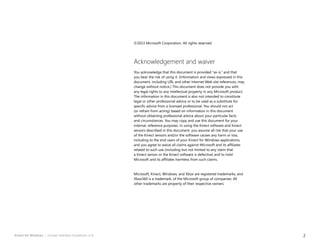This document provides guidelines for designing applications that utilize the Microsoft Kinect sensor and SDK. It acknowledges that the information is provided "as-is" and does not guarantee any legal rights. The document covers an introduction to the Kinect sensor and SDK capabilities, including skeleton tracking, audio input, and interaction ranges. It emphasizes considering sensor placement and environment during application design.













































































































































